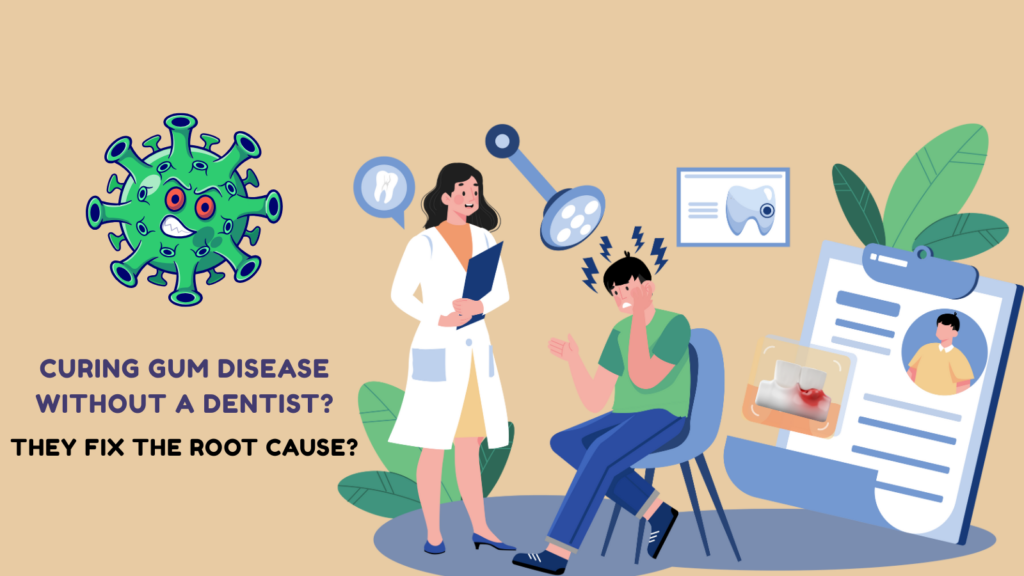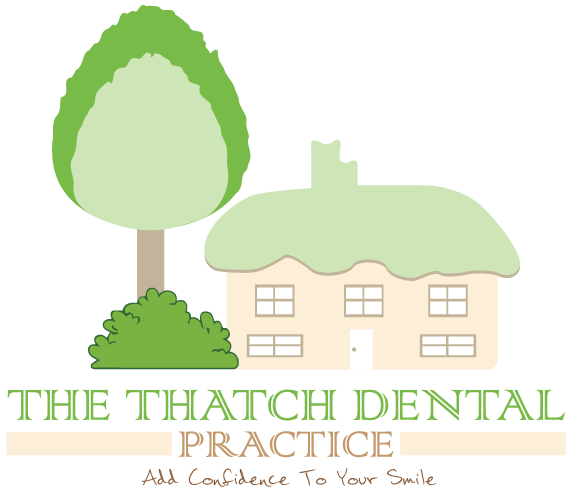
Problem
Gum disease is more common than most people think. According to the CDC, nearly 47% of adults over age 30 have some form of periodontal disease. It starts small — maybe a bit of bleeding when you brush, or occasional bad breath — and it’s easy to ignore. Many people try to deal with it on their own by brushing more often or using mouthwash.
The problem is that gum disease is not just about dirty teeth. It’s a bacterial infection in your gums. Left untreated, it can destroy the bone that supports your teeth, leading to tooth loss. It’s also linked to systemic health issues like heart disease and diabetes.
People often search for “how to cure gum disease without a dentist” because:
- They want to avoid the cost of treatment.
- They fear dental tools or discomfort.
- They think home care alone can fix the issue.
While some home care steps can help manage gum health, the truth is that gum disease often develops below the gumline — a place toothbrushes and floss can’t fully reach.
Agitate
Let’s break down why home-only solutions can be risky.
- The invisible damage
In the early stage, called gingivitis, you might get away with improved brushing and flossing. But when the disease moves to periodontitis, the bacteria create pockets under your gums. You can’t clean these pockets yourself, no matter how good your toothbrush is. - Delayed treatment = bigger problems
A 2022 study in the Journal of Clinical Periodontology found that people who delayed professional gum treatment by more than 12 months had twice the risk of tooth loss compared to those who sought early care. The longer you wait, the deeper the infection spreads. - Case study: Harry experience
Harry, 38, noticed bleeding gums for months. He started brushing twice as long, switched to a “gum care” toothpaste, and even used saltwater rinses daily. The bleeding reduced slightly, but he still had occasional swelling. After 18 months, a dental check revealed 6 mm periodontal pockets — a sign of advanced gum disease. Harry needed scaling and root planing, plus antibiotic therapy. His dentist told him that if he had come in a year earlier, the bone loss could have been prevented. - Gum disease doesn’t heal like a cut
Once the supporting bone and tissue are lost, they don’t grow back naturally. Without professional cleaning and possible surgical intervention, gum disease will keep progressing even if the symptoms seem less visible.
Solution
Now, if you’re reading this thinking, “But I really don’t want to go to the dentist”, here’s the honest breakdown:
Step 1: Understand what you can do at home — and its limits
You can:
- Brush twice daily with a soft-bristled toothbrush.
- Floss or use interdental brushes daily.
- Use an antimicrobial mouthwash like chlorhexidine (short-term, under advice).
- Reduce sugar intake and eat a balanced diet rich in vitamin C and calcium.
These steps help prevent gum disease or manage mild gingivitis. But once gum disease progresses, they can’t reverse the deep infection on their own.
Step 2: Know when self-care is not enough
If you notice:
- Persistent bleeding gums
- Swelling that doesn’t go away in a week
- Bad breath despite cleaning
- Teeth feeling loose or shifting
- Gum recession
…it’s no longer a “home fix” situation. These signs indicate periodontitis, which needs professional cleaning to remove tartar and bacteria below the gumline.
Step 3: Why visiting a dentist is actually the smartest “cure”
Here’s the catch: the fastest way to “cure” gum disease is to stop it before it causes irreversible damage. That’s what dentists do — they remove the cause (deep plaque and tartar), control infection, and guide you on maintenance.
Evidence in numbers:
- The American Academy of Periodontology reports that non-surgical periodontal therapy (like scaling and root planing) can reduce gum pocket depth by up to 1.5 mm in 6 months, something home care alone cannot achieve.
- Professional cleanings disrupt bacterial colonies that home tools can’t reach, cutting inflammation by over 70% within weeks.
Case study: Clara turnaround
Clara, 42, avoided dentists due to cost concerns. After trying oil pulling, herbal rinses, and DIY gum massages for 6 months, she still had bleeding gums. Finally, she booked a dental visit. After two deep-cleaning sessions, her bleeding stopped, her breath improved, and she avoided the need for surgery. She now visits every 6 months for maintenance — costing far less than tooth replacement.
Step 4: Combine both approaches
- At home: Continue brushing, flossing, healthy diet, and quitting smoking.
- At the dentist: Get professional cleaning at least twice a year, more if you have gum disease history.
This combination is what keeps gums healthy long-term.
The Takeaway
You can take steps at home to improve gum health, but curing gum disease entirely without a dentist is unlikely if it’s past the early stage. Gum disease is a hidden infection — by the time you see symptoms, it may already require professional cleaning to reverse or stop it.
Avoiding the dentist might seem cheaper or easier now, but as real cases show, it can lead to higher costs, tooth loss, and more complex treatments later.
If you want to protect your smile and overall health, the best “DIY” cure is actually early action and professional help. Think of your dentist as a teammate, not just a problem-fixer — together, you can keep your gums healthy for life.







